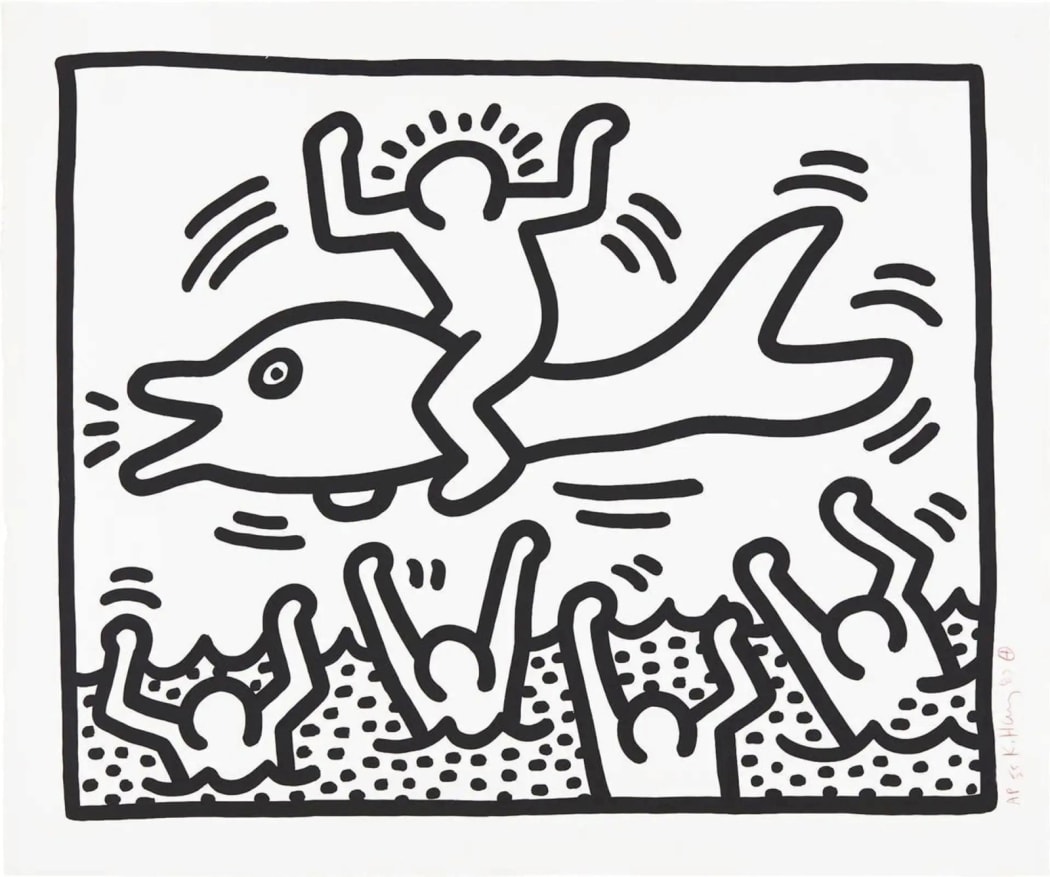
“I am intrigued with the shapes people choose as their symbols to create language.” Haring said. “There is within all forms a basic structure, an indication of the entire object with a minimum of lines, that becomes a symbol. This is common to all languages, all people, all times.”
Throughout both his formal education in art and his subsequent career, Keith Haring held a deep rooted interest in communicating his ideas with his audience - be they commuters in the subways of New York, passersby in the street or gallery visitors. From an early age, Haring would be fascinated by two concepts that he would bring together across his oeuvre: communication and visual codes. One of Haring’s formative exposures to semiotics came in the form of “Jesus Saves” badges and stickers that he took from. The thick black lines and formless figure reaching up to the heavens clearly influences his own motifs that he would develop.
According to The Keith Haring Foundation, “As a teenager he joined the Jesus Saves movement, read the Bible voraciously and developed “an obsession with the concept of the Second Coming…” Above all, Haring was influenced by “Revelation,” which later offered him a veritable storehouse of trenchant visual imagery. Even at the age of 12, according to Haring’s mother, “he began making drawings in which there were Jesus symbols and other types of symbols, like a loop with two dots.” Haring’s phase as a “Jesus Freak” was short-lived, and the impact of religion (above all, of organised religion) on his work can be overestimated. Indeed, the artist once complained to his journal that “Most religions are so hopelessly outdated, and suited to fit the particular problems of earlier times, that they have no power to provide liberation and freedom, and no power to give ‘meaning’ beyond an empty metaphor or moral code.”
Moving to New York City in 1978, Haring studied at the School of Visual Arts where, amongst classes in filmmaking and painting, he developed and interest in semiotics taking classes in the subject. Exploring the formation of symbols and their meaning, Haring took to the class which greatly influenced his artistic choices.
Visual Coding
Haring’s work is replete with recurring motifs and designs whose meanings change constantly. The early reaction from the public to such works (subway drawings) involves a passerby asking the artist, “what do these mean?” to which he replied, “I make the works and you choose what they mean”. Influenced greatly by William Boroughs cut up technique where the author would cut up various texts and rearrange them in a seemingly random manner - thus changing their meaning, Haring would use a similar approach. However, his was much more focused, by repeating his famous motifs of babies, dogs and UFOs amongst others by repositioning and changing how the objects interacted.
By developing a visual language, almost hieroglyphic, Haring was able to both communicate deeply personal subjects that would be rendered easily accessible to the wider public. By forgoing traditional gallery model, Haring was also able to break the context of artwork presentation - a gesture, much like his works, full of meaning.
Haring's most famous symbols:
Radiant Baby
The ‘Radiant Baby’, seen in plate one, is arguably Haring’s most famous icon, emblematic not only of his own child-like, cartoon style, but the striving for social and political justice in his work. Through the lens of the child, the ultimate symbol of purity and innocence, Haring conveys a powerful message of hope winning against cynicism. The lines emanating from the baby express this special quality, and the artist stated that the baby represented: ‘the purest and most positive experience of human existence’.
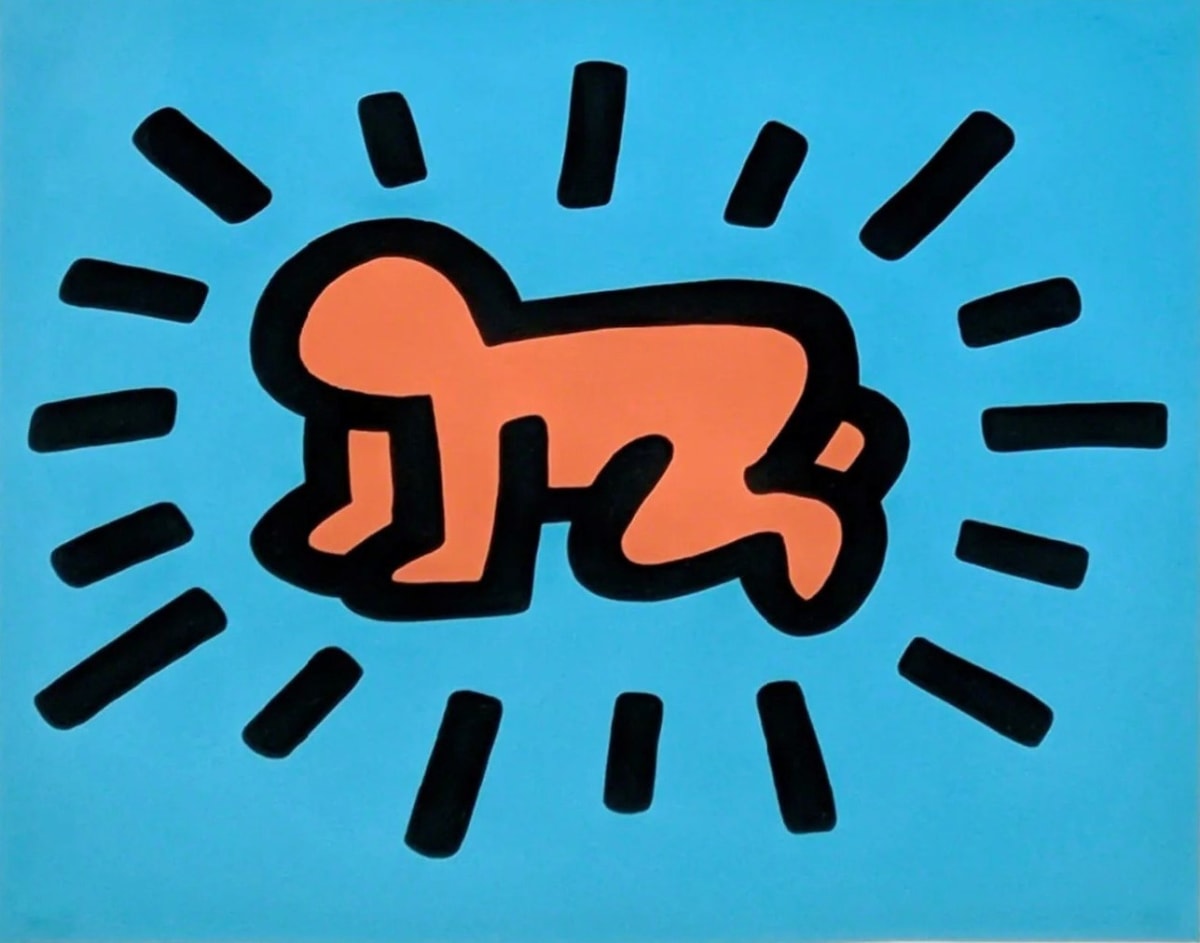
Intertwined Figures
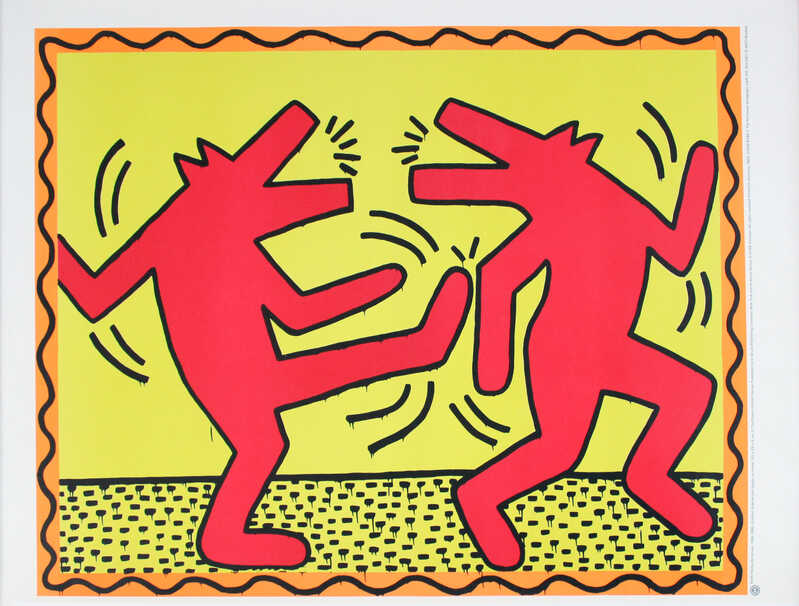
Haring's iconic figures are rarely static. They twist, turn, and contort, giving the impression that they are in a perpetual state of motion. This dynamic quality reflects the fast-paced nature of urban life and the constant flux of society. In "Untitled (Dancing Dog)" (1986), Haring's dancing dog embodies the spirit of movement and joy.
Movement is an integral aspect of Keith Haring's artworks. His lines and forms seem to pulsate with life, creating a sense of perpetual motion. This dynamic quality in his art not only adds a layer of visual excitement but also serves as a metaphor for the ever-changing nature of life and society.
Haring's use of a continuous line in his work is emblematic of his commitment to conveying messages of unity and interconnectedness. His figures are often connected by a single unbroken line, suggesting the interdependence of humanity. In "Radiant Madonna" (1982), the use of continuous lines accentuates Madonna's radiant and nurturing presence.
Barking Dog
The ‘Barking Dog’, is an icon that is often presented differently in Haring’s work dependent on its context. Pictured here against a blood-red background, it appears ominous and foreboding. In an Untitled portfolio from 1983, a group of dogs crucify and rule over a human figure in a tale of oppression and subjugation. Although visually direct and flat in expression, Haring’s form of the dog expresses violence in the unusually long jaw of the dog which is out of proportion to its body.
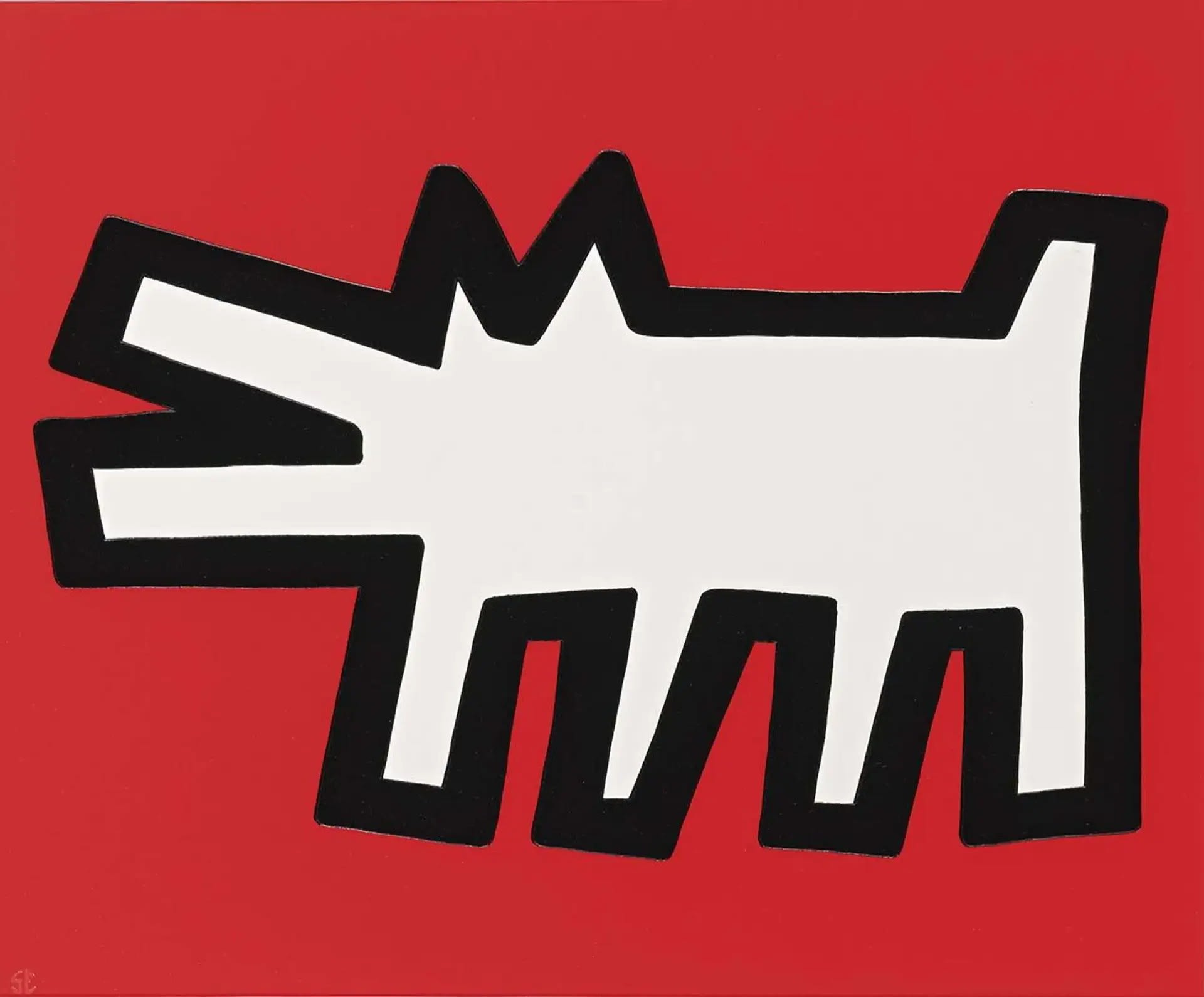
UFOs
Even in his use of cartoonish flying saucers - popular imagery in the 80s – Haring's use of UFO lore is profound. In an interview in Rolling Stone he said ‘the dog is being zapped by a flying saucer. Suddenly it made sense to draw on the street, because I had something to say.. And there was an animal being, which now has evolved into the dog. They really were representational of human and animal. In different combinations they were about the difference between human power and the power of animal instinct.’
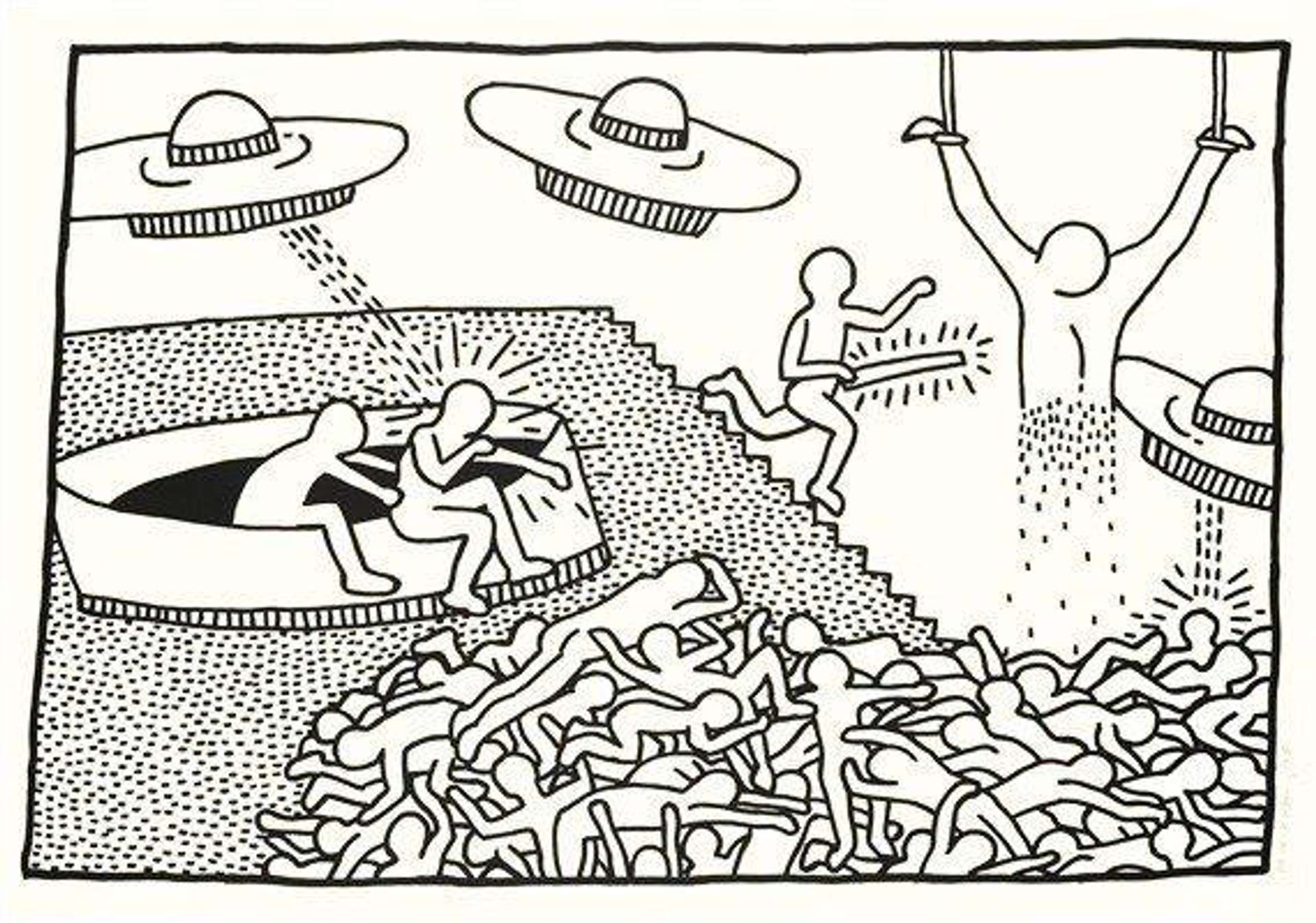
Explore Keith Haring prints for sale and contact Andipa Editions via sales@andipa.com or call +44 (0)20 7589 2371 for further information.
